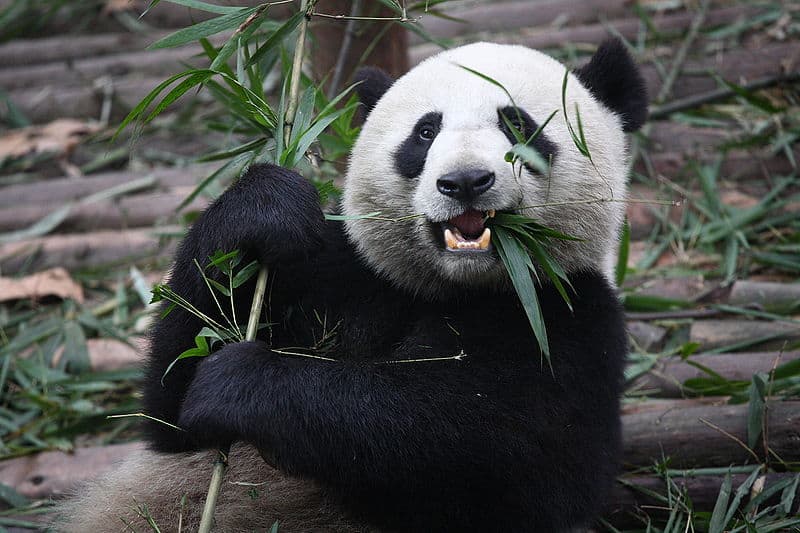It surprises some folks when they realize bamboo is a type of grass. After all, some bamboos can grow up to 100 feet tall! But regardless of the amazing height of some varieties, bamboo is not a tree. Instead, bamboo is part of the Poaceae family, which is a category of true grasses. There are over 1,400 species of bamboo, but many are native to subtropical and tropical regions. The climate in Illinois is pretty far from tropical, so is it even possible to grow bamboo in The Land of Lincoln? It is, but choosing the right bamboo variety is critical.
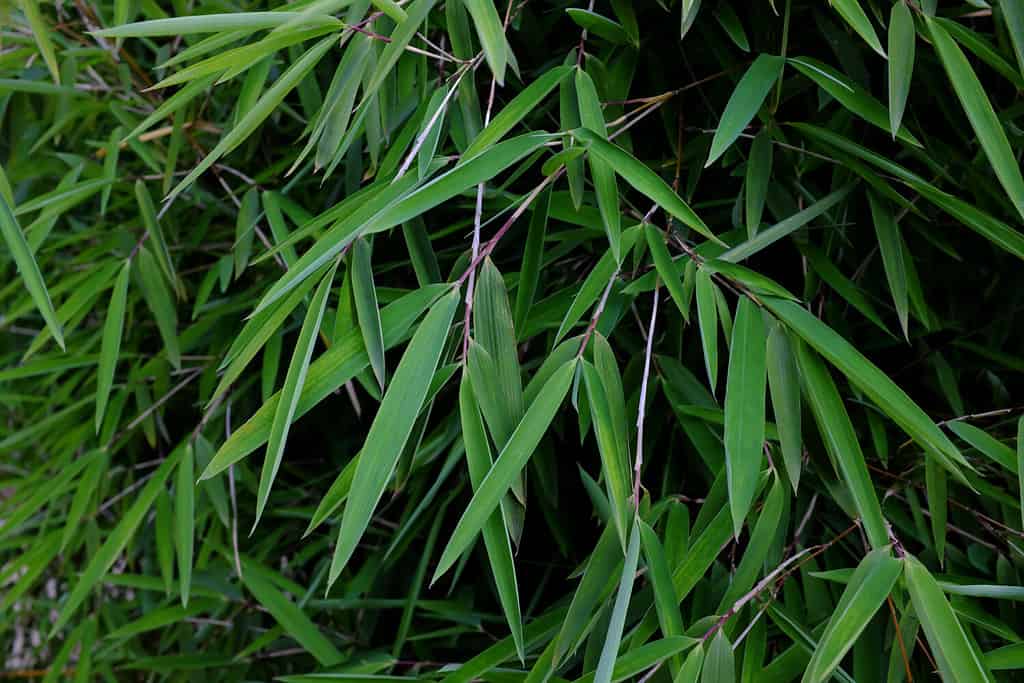
Some bamboos are hardy enough to withstand Illinois’ cold winters, such as
Fargesia bamboos.©cristo95/Shutterstock.com
USDA Hardiness Zones
The USDA plant hardiness zone is the most important factor in determining which bamboo species is right for a landscape. Planting a bamboo species that is ill-suited for your hardiness zone is almost guaranteed to end in failure.
Illinois’ hardiness zones range from Zone 5a in the northwest corner of the state to a very small sliver of Zone 7a in the extreme south. Most Illinoisans live in Zones 5b-6b, but any of the state’s hardiness zones are exceptionally cold for bamboo growing. This is especially true if growers want to grow clumping bamboo.
Runners vs. Clumpers
While there are more than 1,400 bamboo species, they are all divided into just two main categories: running and clumping bamboo.
Runners
Around two-thirds of bamboo species are running bamboos (often simply called “runners”). Running bamboo is the fastest-growing plant in the world. On average, runners can spread three to five feet per year, but some species spread as much as 15 feet or more each year. There are some extreme types of running bamboo that add nearly three feet of vertical growth in just 24 hours!
The rhizomes (horizontal root systems) of running bamboo spread quickly and relentlessly. In almost no time at all, runners can grow outside of their intended boundaries. These bamboos care nothing for property lines or other borders.
When runners encroach on unwelcome territory, the rhizomes must be dug up, which is a difficult and laborious task. The only other option is to kill off the bamboo with chemicals, which is difficult, bad for the environment, and potentially dangerous to the gardener.
The extreme spread of running bamboo has led some states and localities to declare it invasive. As an example, the city of Champaign has banned all species of running bamboo.
If there are no laws prohibiting running bamboo and you wish to plant it, it is imperative that you install a growth barrier. Homemade barriers can be constructed using pressure-treated wood. Plastic barriers are also widely available online and in physical stores and nurseries. Whatever material you choose, some type of rhizome barrier is essential for runners. But, even with these blockades in place, running bamboos still need to be closely monitored.
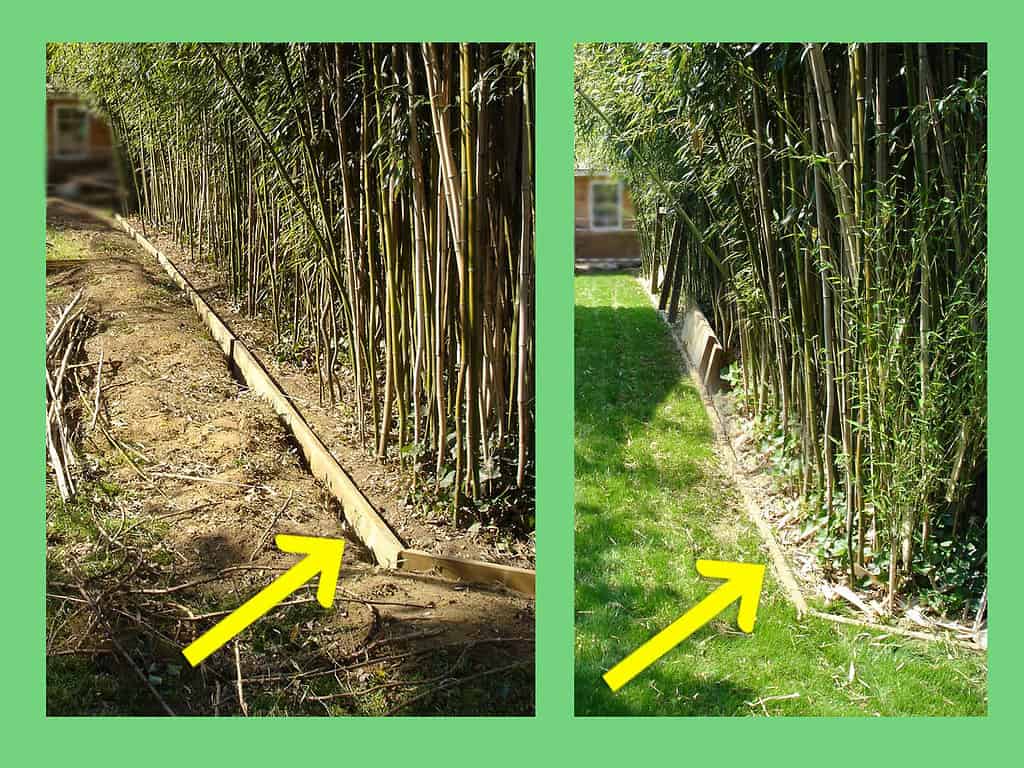
An in-ground barrier is essential to contain the growth of running bamboo.
Clumpers
Clumping bamboos (clumpers) are much more manageable than running bamboos. The root systems of clumpers only expand a few inches per year. Clumping bamboo can still grow outside its boundaries, but the growth is slower and much easier to correct than running bamboo.
The problem for Illinois growers is there are many more cold-hardy runners than clumpers. If you want to grow clumping bamboo in Illinois, the choices are very limited. Fargesia bamboo varieties are the most cold-hardy clumpers and should be high on the list of bamboo lovers in Illinois. Here are a few of the most cold-tolerant varieties.
Fargesia Rufa
This bamboo can be grown anywhere in Illinois since it is cold-hardy to Zone 5. The leafy stems are strong and rarely break when covered with heavy snow. It is native to the mountains of Sichuan, China.
This clumper is a small bamboo, growing six to ten feet tall with a six to eight-foot spread. New culms appear bluish-green with red sheaths (rufa is Latin for “red”). As culms mature, they transition to bright green and measure ½ inch in diameter.
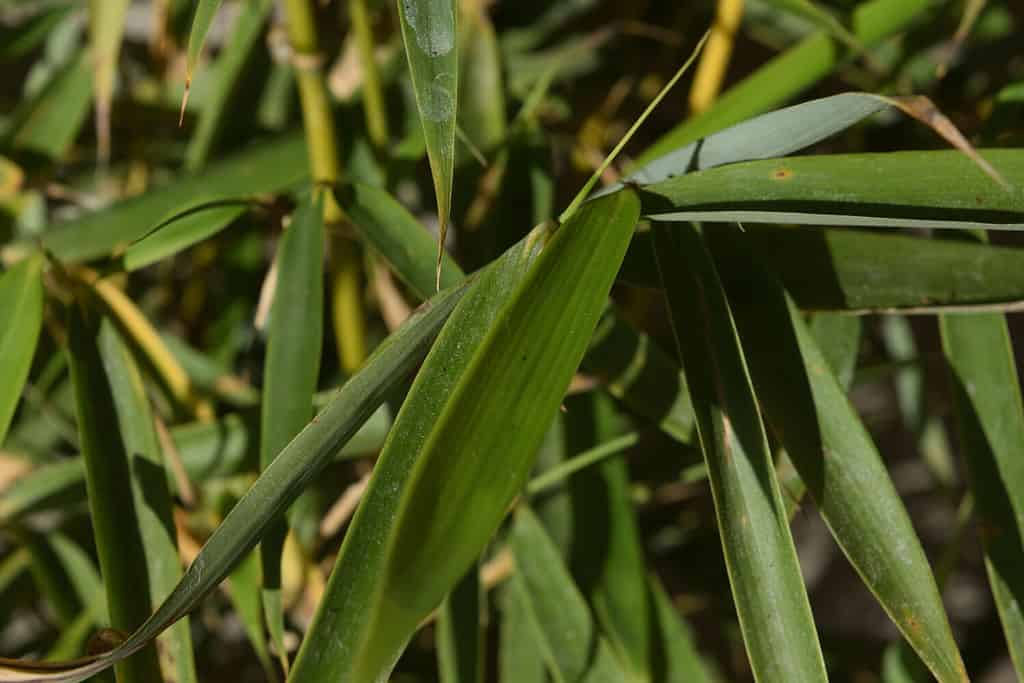
is a leafy, cold-hardy bamboo that can be grown in Zone 5.
©silentstock639/Shutterstock.com
Fargesia Denudata
This is another clumping bamboo that is hardy to Zone 5, meaning growers throughout Illinois can grow it with great success. It is also one of the lesser-known Fargesia varieties, so it would set your landscape apart from most other bamboo aficionados.
Fargesia denudata grows about twice as tall as Fargesia rufa, with a mature height of around 20 feet. Its taller stature makes this bamboo a great natural privacy screen. The leaves of the Fargesia denudata resist yellowing and, instead, remain green throughout the winter.

bamboo stays green all winter long, even in the coldest regions of northern Illinois.
Fargesia Scabrida
The variety Fargesia scabrida is recommended for growing in Zones 6-9. Northern Illinoisans need to skip this bamboo. Roughly speaking, Illinois growers who live south of Springfield can likely grow this bamboo successfully. Check the hardiness zone in your exact location to be sure, though.
This colorful bamboo features different hues throughout the growing season. New culms are purplish-blue with orange sheathing. The culms transition to olive green at maturity.
This clumper is relatively fast-growing, adding up to three feet of height in a year. It tops out at 12-14 feet when fully grown.
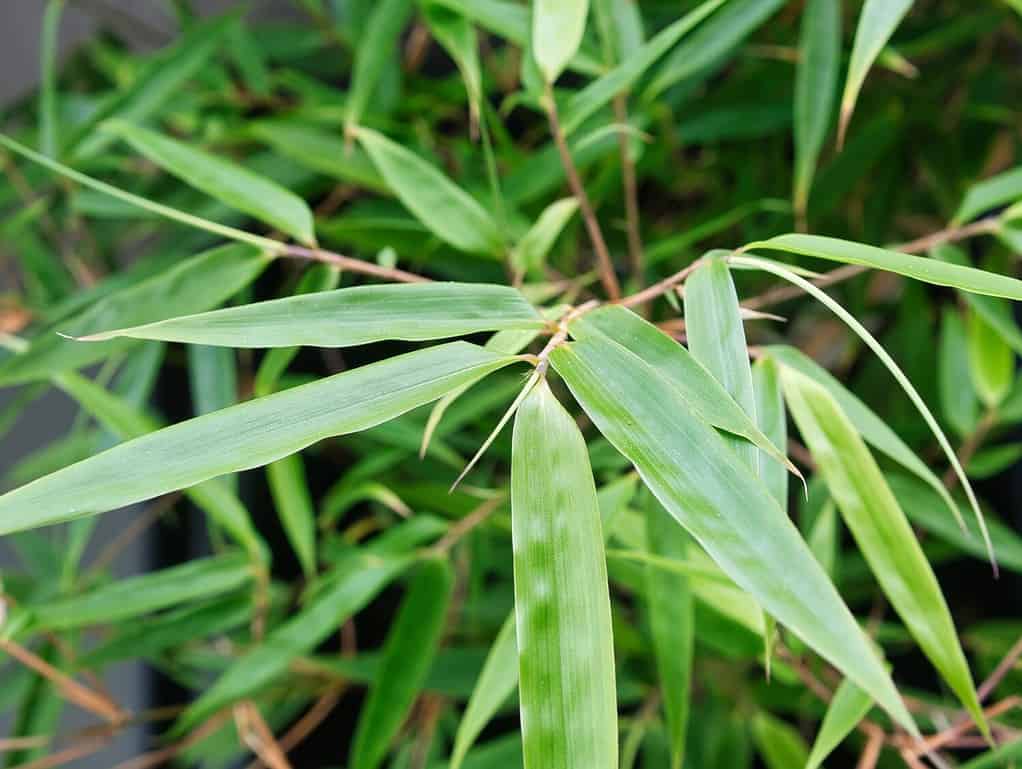
provides growers with different colors to enjoy throughout the growing season.
©Maurice Lesca/Shutterstock.com
Other Bamboos
As stated earlier, there is a much larger selection of running bamboos that can handle Illinois’ climate, but runners present many more potential problems.
When considering running bamboo, check your local laws first. If there are no laws prohibiting running bamboo and you wish to proceed, put the aforementioned growth barrier in place and then consider which species might be right for you.
River Cane (Arundinaria gigantea)
If you do want to grow a running bamboo, you may want to consider River Cane bamboo. The Arundinaria is the only bamboo genus native to North America. River Cane (also known as Canebreak) bamboo is the only bamboo species native to southern Illinois, although it only covers two percent of its previous native habitat in the state. It is typically found along riverbanks and in moist bottomlands.
This bamboo grows 20-25 feet tall and features a classic bamboo look with neat segments of spindly, hollow green stems. The foliage may die off in the winter, but the roots are hardy to Zone 5, and the canes will produce new leaves in the spring.
While this bamboo is native to southern Illinois, it is a running bamboo which means it can still be illegal to cultivate in some areas.
A few other cold-hardy running bamboos include:
- Red Margin Bamboo (Phyllostachys Rubromarginata ‘Red Margin’) – Zones 5-11
- Yellow Groove Bamboo (Phyllostachys Aureosulcata ‘Yellow Groove’) – Zones 5-11
- Nuda Bamboo (Phyllostachys Nuda) – Zones 6-9
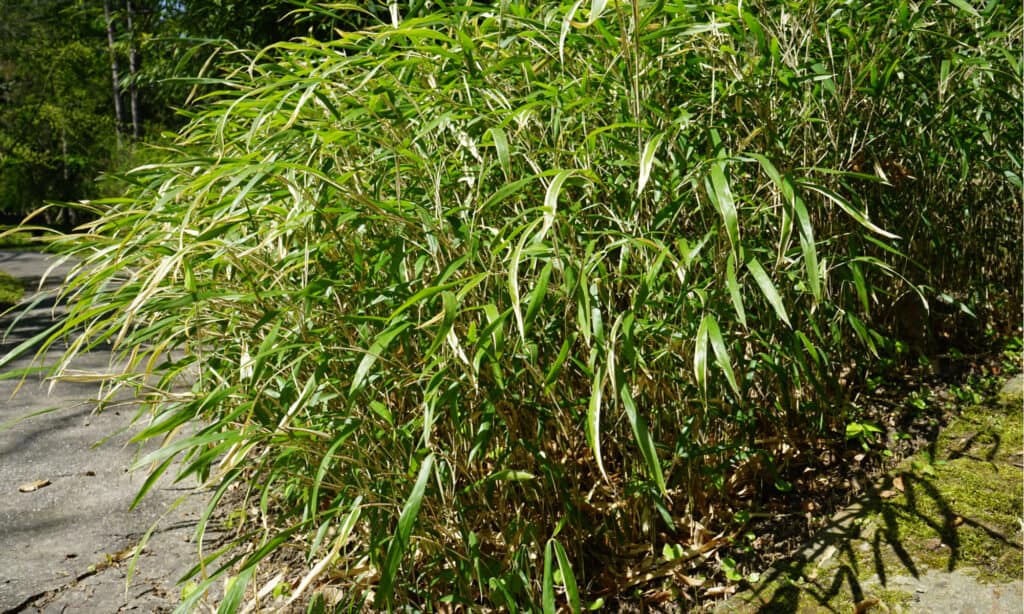
River Cane bamboo is native to southern Illinois but should still be grown with care and caution.
©Dusan UHRIN/Shutterstock.com
Bamboo Uses
Beyond its growth as an ornamental plant or natural privacy screen, bamboo is used in construction, flooring, furniture, and cooking. Pandas aren’t the only ones who can enjoy munching on bamboo. There are tons of recipes that incorporate bamboo as a main ingredient.
It’s no wonder that some have labeled bamboo as “the most amazing plant in the world.” It has seemingly limitless uses, and it features prolific growth. In fact, it’s a bit too prolific in some instances! But there are bamboo varieties, especially a few cold-hardy clumpers, that may be perfect for your Illinois landscape.
Thank you for reading! Have some feedback for us? Contact the AZ Animals editorial team.





